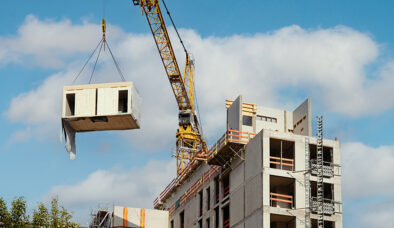The Mental Amenity: Wellness
No matter where the tenant or customer is working these days, well-being and mental health is something that affects them. Wellness-based amenities have been increasing in popularity and offer several avenues for re-invention in the virtual world. Not only can mental health initiatives improve the lives of the tenants currently leasing a property, but they can also often attract new ones who strive for an environment that makes it easier to promote work-life balance.
Crunching Numbers
One way to start developing wellness-based amenities and tenant programs is to take a look at the WELL building standard. While LEED focuses on sustainability and high performance, WELL is more holistic in terms of tenant experience. Getting a building to meet the WELL Building Standard means not only focusing on the physical wellness of the building’s systems but also the availability of options for fitness, emotional health, and comfort of tenants.
All of the tenants of the WELL Building Certification are aimed at providing tenants and customers with optimal space and working environment. Having a building be WELL certified not only shows potential tenants that you care about having a healthy building, but that your organization cares about the health of those inside the building. This can increase the retention of tenants and lure in new ones with similar priorities.
Wellness in a Low Touch World
COVID-19 has made high-touch spaces for wellness be put on a temporary pause in terms of interest. However, wellness amenities go far beyond a gym or spin class. Wellness amenities could include rooms for nursing mothers, meditation areas, or large outdoor work areas. In the next few months, tenants may be more inclined to take advantage of open spaces as work areas.
Necessity is the mother of re-invention. Many organizations have been discovering new ways to transform existing space into usable space to accommodate the tenant’s wishes to spread people out. Placing more tables and seating in existing open areas or converting patio space into meeting space is a great way to turn existing amenities into a wellness amenity.
Mind and Body
While a property manager cannot control their tenants’ workload, they can certainly provide amenities and programs that help anyone with a busy workload. Yoga, meditation and mindfulness classes are a great way to offer stress-reduction with both a physical and virtual option. Subsidizing a subscription to a relation or meditation app can also encourage tenants to prioritize mental health.
Many tenants may also be parents and enjoy resources specifically for those with children. This could include an on-site care facility or even just a fridge for milk bottles. Considering hosting virtual children’s yoga or other wellness classes geared toward children that may allow working parents to have a break.
Feeling Good about Where You Work
Health-based tenant amenities are becoming increasingly popular and a key to retention. With the high stress levels people have been recently experiencing, these programs and features may become even more important going forward. Not only can focusing on wellness bring prestige to a property, but it can improve the lives of the people inside. Work-Live-Play has been the motto for a while, but work-life-breathe could be the motto of the future.
Sources: https://legacy.wellcertified.com/en https://www.buildings.com/news/industry-news/articleid/21782/title/10-amenities-improve-well-being-property https://www.naiop.org/en/Research-and-Publications/Magazine/2019/Winter-2019-2020/Business-Trends/When-Wellness-Meets-Commercial-Real-Estate https://www.bdcnetwork.com/healthier-perspective-office-developers-bet-wellness-amenities-attract-top-notch-tenants









